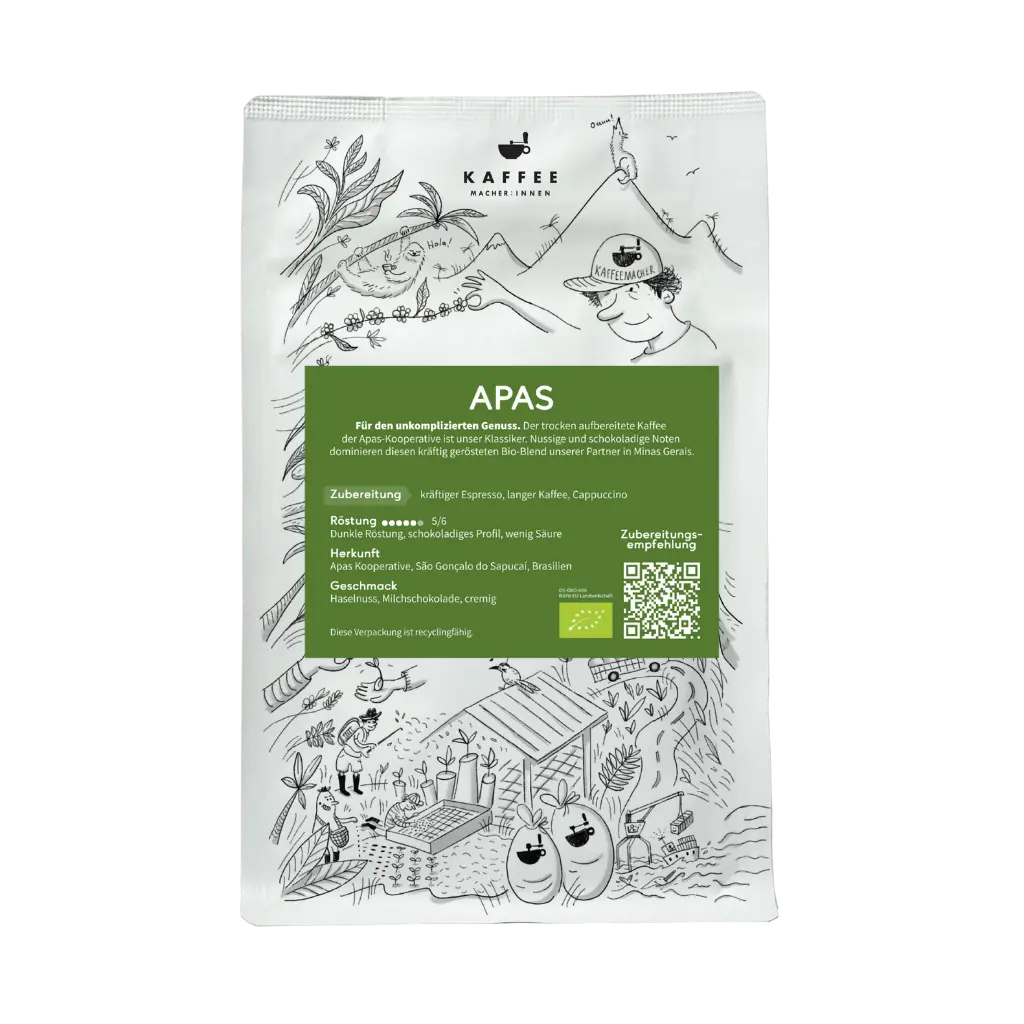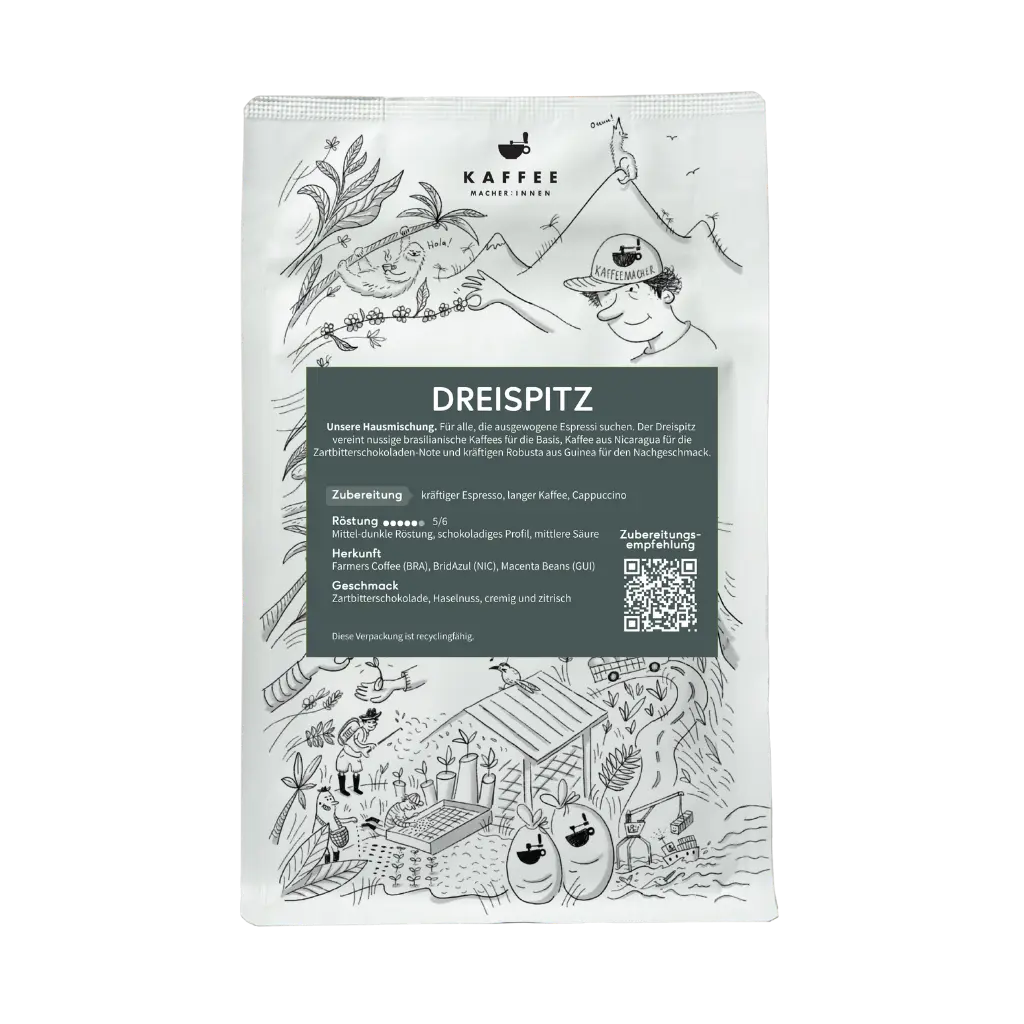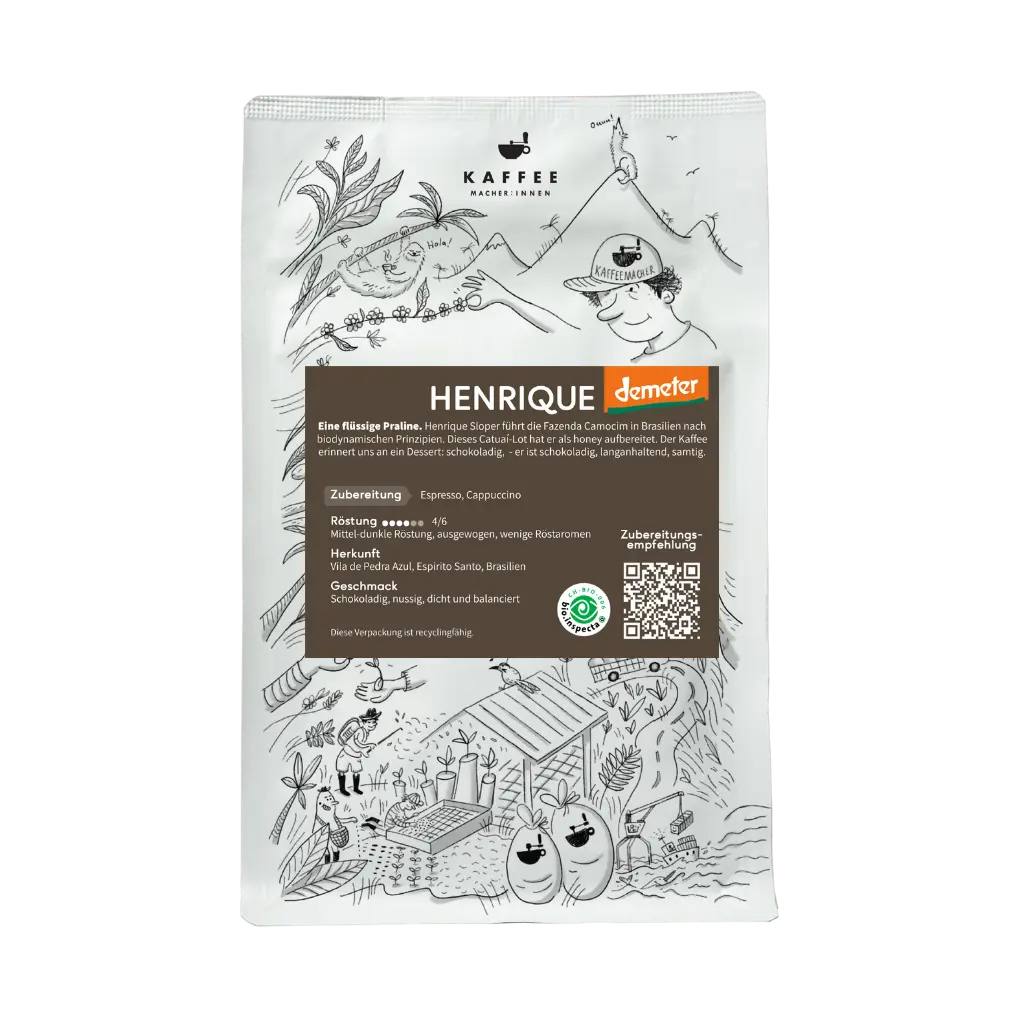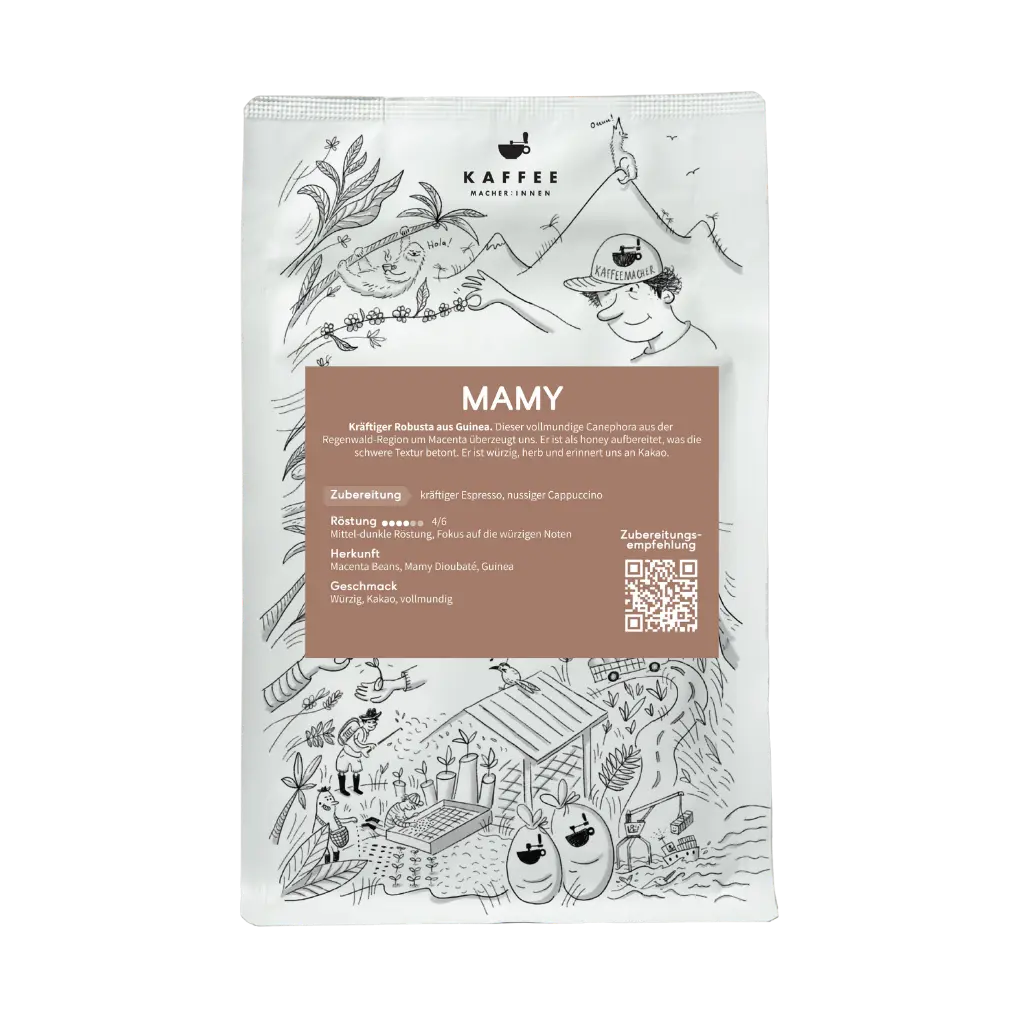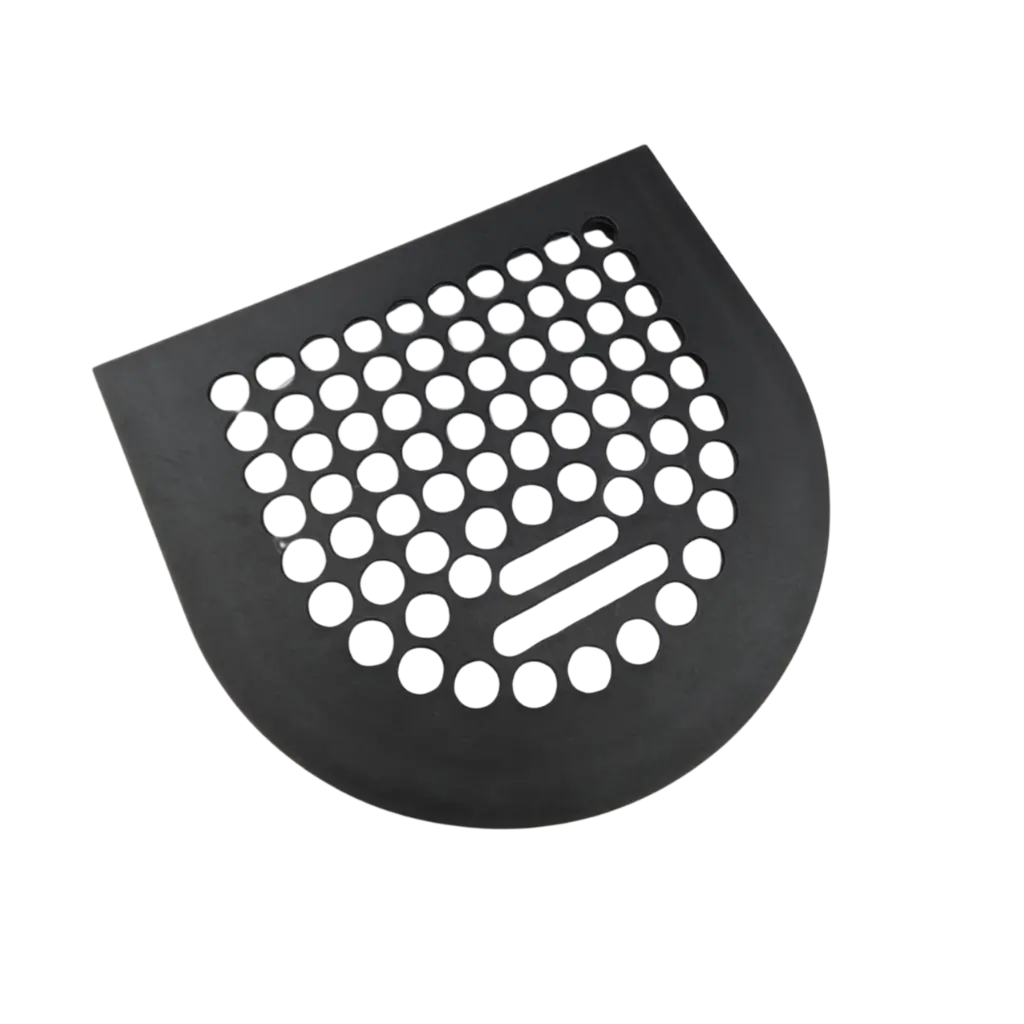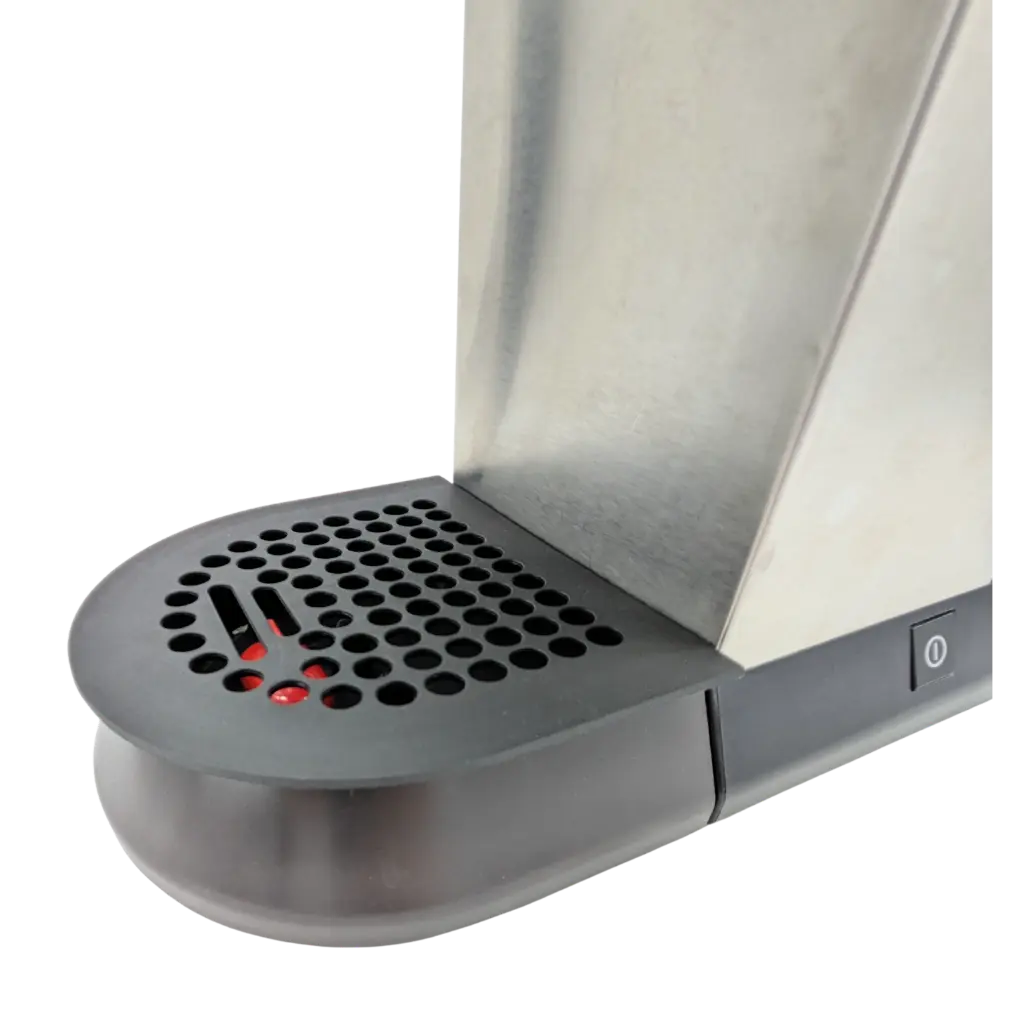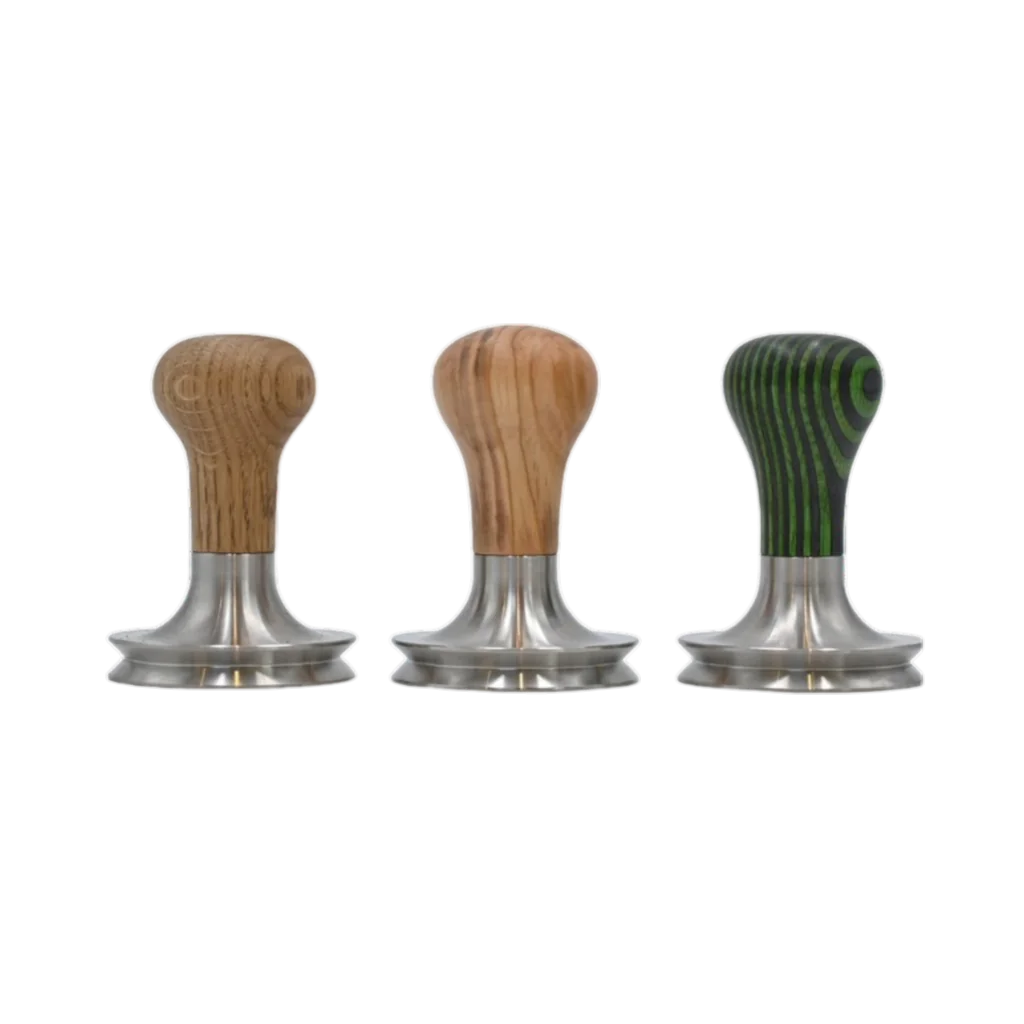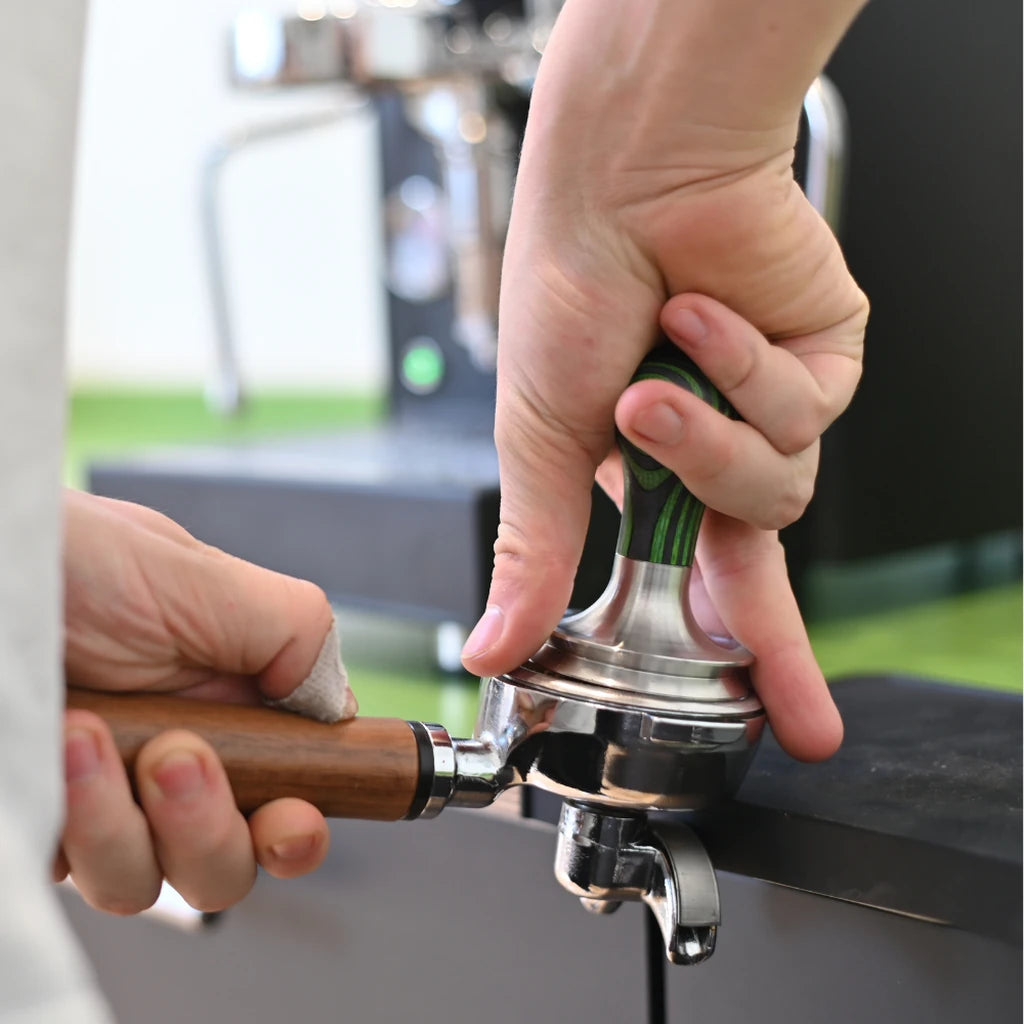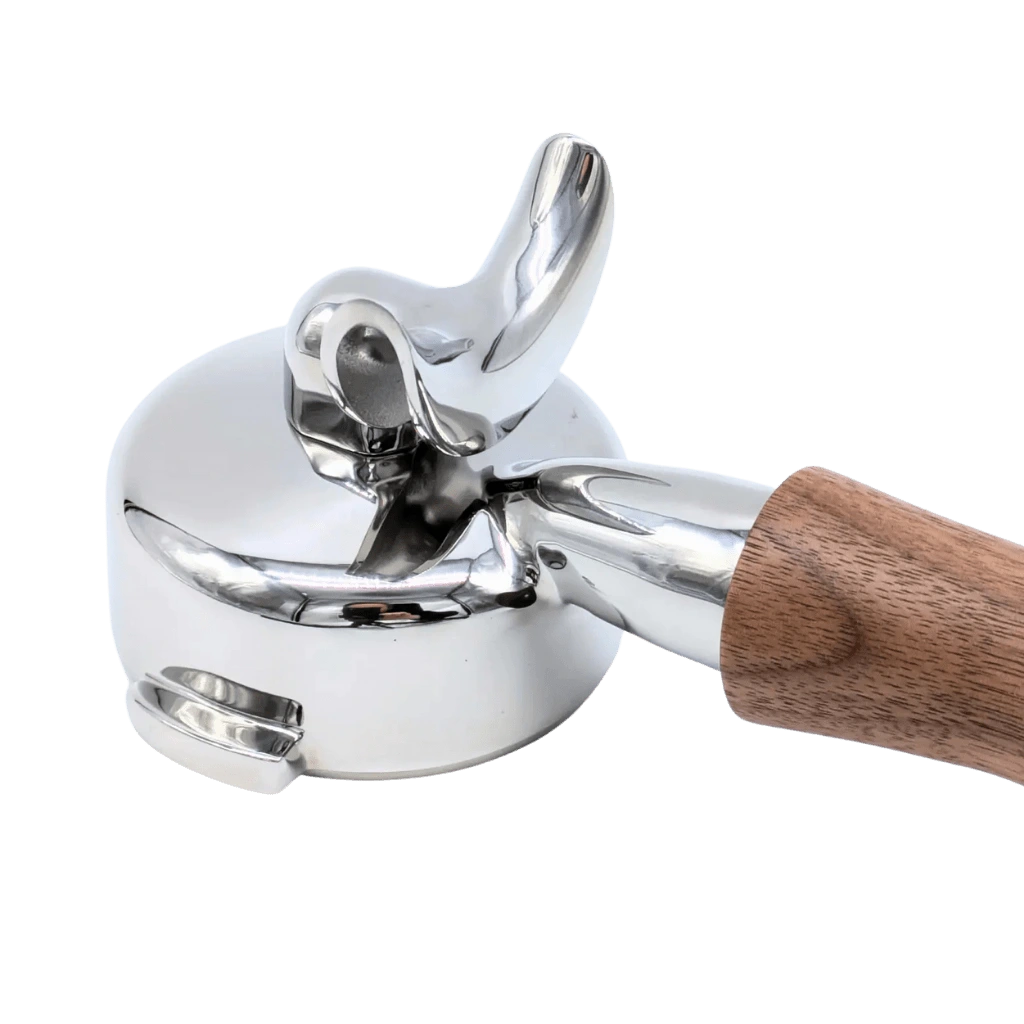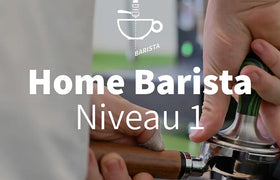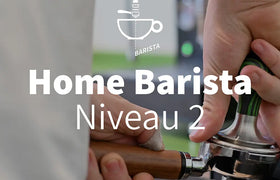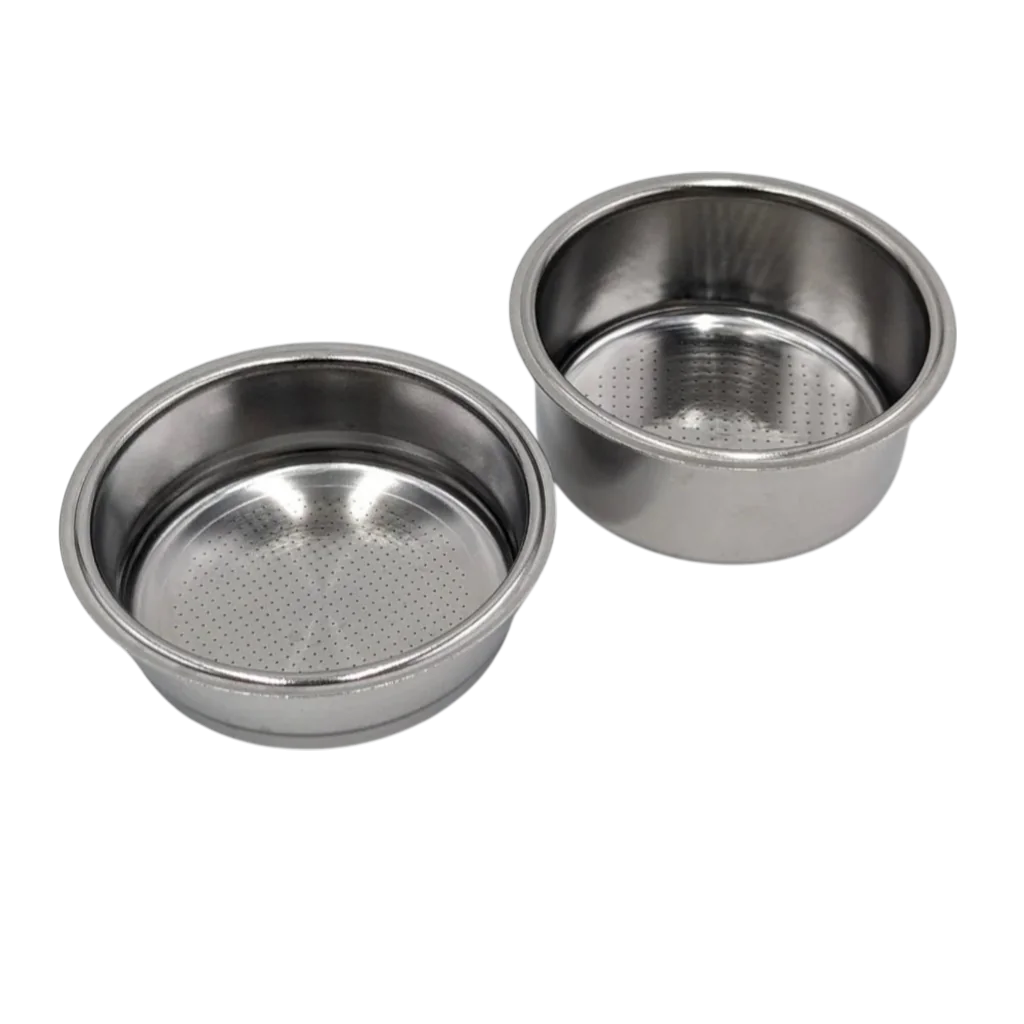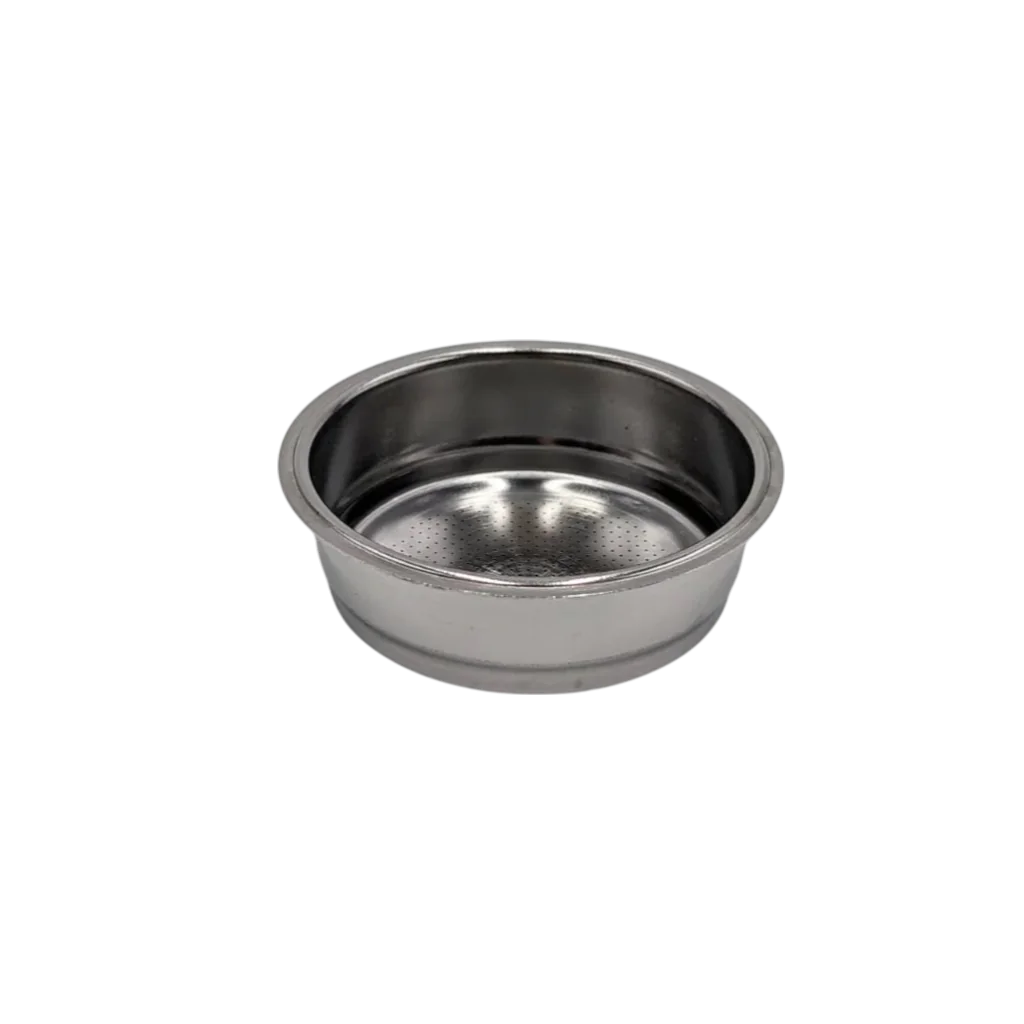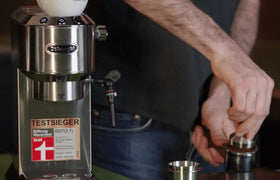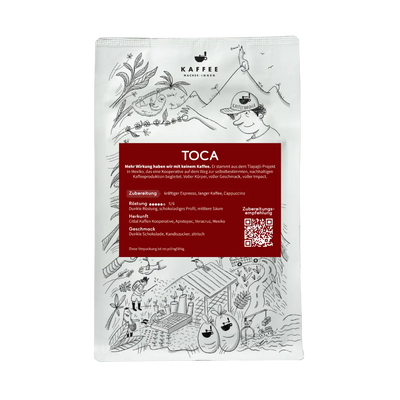The Sage Oracle Dual Boiler is a high-end, all-in-one dual boiler espresso machine that automates almost every step from grinding to milk steaming. It is aimed at comfort-loving espresso fans and users switching from fully automatic machines who are willing to invest €2,600 (CHF ~2,600). Its strengths lie in its fast readiness (~4 min heat-up time) and well-controlled temperature management (temperature deviation <±2 °C even after 15 shots). The volumetric shot control and automatic milk steaming also work impressively reliably. However, the Oracle Dual Boiler shows weaknesses in the integrated grinder: its dosing accuracy fluctuates noticeably, which limits the reproducibility of espresso quality. In addition, the machine is constantly accompanied by an audible fan hum.
Overall score: 86/120, value for money: 8/10 – a successful comfort-focused package with deductions for inconsistencies and the high price.
Classification & test setup
To ensure independent testing, we buy all test devices ourselves, even though manufacturers constantly ask us to test their machines for free. If you want to support our work and the purchase of further test machines, feel free to try our coffees or order the Sage Oracle Dual Boiler via our affiliate link, e.g. at Amazon. It doesn’t cost you more, but we receive a small commission.
The Oracle Dual Boiler is Sage’s most advanced portafilter model and positions itself as a bridge between a classic espresso machine and a fully automatic machine. With dual boiler technology, built-in grinder, automatic tamping function and fully automated milk steaming, it aims to make it easier for beginners to enter the world of espresso without overwhelming them with manual steps. At the same time, it’s meant to offer ambitious home baristas enough control to fine-tune via simple recipe settings. In short: with this machine Sage promises “espresso making on easy mode” in pro quality – at a premium price.
As always, we tested the Oracle Dual Boiler independently and in depth. Our test took place in a controlled environment (room temperature ~21 °C), using soft water and fresh Apas beans. We first put the machine into regular use, used it for a few days in everyday conditions and then moved it into the test scenario.
We then followed our usual extensive measurement protocol: this included temperature measurements with a Scace sensor in the portafilter, volumetric tests of the pump, precise weighing of the ground coffee dose and particle distribution, as well as noise measurements during operation. We also simulated realistic scenarios – from a single morning espresso to a WBC-style protocol with 14 consecutive shots – to explore the performance limits of the Oracle Dual Boiler. Power consumption in various operating states was also measured (see Energy & Efficiency). In short: we put the machine through its paces and checked both with data and sensory evaluation where it shines – and where it doesn’t.

Design, build quality & accessories
At first glance, the Oracle Dual Boiler clearly looks like a typical Sage product. Materials and build quality are very reminiscent of Sage’s cheaper models – in both good and bad ways. The machine is mostly made of brushed stainless steel sheet, feels solid and weighs in at around 17 kg (good for stability). However, there is no major step up in perceived quality compared to a €1,000 Sage. The panel gaps are clean, but the material thickness (e.g. of the cup tray) could be higher for this price bracket. On the plus side: inside you’ll find two stainless steel boilers and even a heated brew group – the latter is a clever feature that brings the portafilter quickly up to temperature. The flip side of this tech-heavy approach is a continuously running fan that has to provide cooling and leads to a permanent hum. This fan noise is somewhat reminiscent of a PC fan. You can almost hear that there’s a small computer on board.
Accessories & scope of delivery
Sage equips the Oracle Dual Boiler very generously. In the box you’ll find, among other things, a stainless steel milk jug, a knock box for coffee pucks, cleaning tools and of course the portafilter with baskets (single and double). A water filter for the 2.3 L water tank is also included. This is typical for Sage and a sensible extra; we recommend replacing it regularly.
The 58 mm portafilter itself is made of solid stainless steel and feels good in the hand. It locks flat into the brew group; the group gasket grips firmly, although the handle has to be turned slightly further to the right than on E61-style machines. The wide, removable drip tray (approx. 1.3 L volume), covered by a stainless steel grid, is striking. Under the grid, Sage relies on plastic elements. Functionally that’s fine, but visually and in terms of feel, it’s not quite as premium. A plus: inside the drip tray compartment there is a practical storage area for accessories (e.g. blind basket, cleaning tools) and a rolling mechanism that makes it easier to pull the heavy machine forwards and backwards on the countertop.
Overall, the build quality in everyday use is convincing: nothing rattles, the controls (dials, levers) feel robust. Nevertheless, the impression remains that Sage is prioritising the inner workings over external luxury – other dual boiler machines in the €2,500 league (e.g. Profitec, ECM) look clearly more purist and high-end, but they don’t pack in this much technology.

Operation & workflow
In daily use, the Oracle Dual Boiler presents itself as extremely user-friendly. It is operated via a combination of menu display, rotary dial and a few buttons. The central display (not a touchscreen, but an informative LCD) guides you through the settings and shows parameters such as temperature, shot time or menu selections. Even the first power-on is accompanied by a friendly start jingle (“ding-dong“). Fortunately, you can turn this down or off in the settings.
After switching on, the Oracle heats up very quickly (details in the Heat-up Time section). Once it is ready, it guides the user step by step to an espresso: grinding & tamping are fully automatic at the touch of a button. You lock the portafilter into the grinder dock and the machine grinds the preset dose and tamps the coffee automatically using an internal tamping mechanism. This integrated tamper has an adjustable pressure level; in our test, it reached around 10–15 kg of tamping force, resulting in an evenly compact puck – at least if the dose is right (more on this in the Volumetrics chapter). After tamping, the machine releases the portafilter and you lock it into the brew group as usual.
Starting the shot: At the touch of a button, the espresso shot starts, controlled volumetrically by default. This means the Oracle automatically stops the shot once the preset beverage volume is reached (e.g. ~50 ml for a double) – and it does this with impressive precision and repeatability. The integrated flow meter works flawlessly; in our series of measured shots, the variance between individual extractions was at most 1–2 ml, which is excellent. That means you can skip manual timing and stopping altogether.

Everyday routines
The entire user interface of the Oracle is designed to make the workflow as simple as possible. A smartphone app also allows you to switch the machine on and off via timer or remote control – handy to preheat from bed in the morning or to switch it off if you forgot. Thanks to the short heat-up time, however, this function is only of limited real benefit.
Cleaning and maintenance are well thought out: after the shot, a solenoid valve releases the brew pressure (dry puck function), so that the coffee puck lands dry in the basket. The steam wand automatically purges itself with hot steam after steaming milk (automatic blast-out). In addition, you can activate a cleaning flush by double-tapping the hot water button. This is ideal for rinsing the brew group and basket between shots.
The stainless steel surfaces are relatively insensitive and easy to wipe clean; fingerprints are less visible than on polished chrome. Thanks to the extendable rollers, you can easily pull the machine forward on your own to clean behind it or remove the tank. Overall, we found the cleaning effort in our test to be low: daily emptying of the drip tray (the fill level is indicated by a red float), wiping the steam wand (cool-touch, so you don’t burn yourself) and occasionally backflushing with a blind basket and detergent tablet – that’s it.
Grinder automation – potential collides with reality
Where there’s a lot of automation, there are also automation pitfalls. One main criticism is the grinder automation (see Volumetrics): the Oracle does grind on its own, but it doesn’t measure the amount of ground coffee precisely – it seems to rely on fill level/pressure. This means the delivered dose can vary slightly depending on beans and settings and sometimes in a random way. In everyday use, we noticed that some shots received a bit less coffee than expected, while the next one got a bit more – without the machine raising any alarm. Unfortunately, a precise coffee dose is the prerequisite for the entire grinder auto-adjust system to work properly.
Yes, Sage is the first company to roll out synchronised and automated grinder adjustment for home espresso machines on a large scale. If the extraction time is significantly shorter or longer than target, the Oracle automatically adjusts the grind for the next shot. The concept sounds brilliant, but in our test it only worked to a limited extent. The tolerance range before the automation kicks in is relatively large – “much too large”, as Michel on our team points out.
In other words, the machine ignores small deviations and only corrects when a shot is really off (more than 5 seconds above or below the target).
Unfortunately, this control algorithm cannot currently be fine-tuned manually. Two main issues cause additional fluctuations and challenges for the system. The imprecise dose delivery itself causes shots to run shorter or longer. No surprise there – the dose strongly influences puck resistance, not just the grind size!
If you dial in a grinder manually, you always grind out a few grams to clear the so-called retention. That’s important, because otherwise a few grams of the “old grind setting” will negatively affect the shot. We measured around 3 g of retention, so it’s worth purging it out.
In practice, the Grind-by-Sync function is accurate enough to keep shots roughly in the target range. But it is far from being precise enough to nail every single extraction. For now, manual espresso preparation is still miles ahead in that respect.

Heat-up time & temperature management
For a long time, dual boiler machines were considered a “morning patience test”, but the Sage Oracle Dual Boiler clearly disproves this. It reaches operating temperature in about 4 minutes – an outstanding value in this class. In our test, we were able to pull the first espresso after just under 4:00 minutes without any temperature drop. This is made possible by a combination of two relatively small boilers, powerful heating elements (2,300 W maximum draw) and the heated brew group. The latter ensures that the portafilter becomes hot quickly even without a long waiting time.
Sage has obviously done a good job on thermal management here. After just 4–5 minutes, we reached stable temperatures – this is top tier and comparable to the fastest thermoblock machines. For context: many classic dual boilers (without a heated group) need 15–20 minutes of warm-up to be similarly stable. With the Oracle Dual Boiler, you can safely follow the rule: switch off when not in use, and only heat up when needed – that saves energy.

Temperature stability
Once warmed up, the Oracle keeps brew water temperature constant. In our standard protocol (brew temperature 94 °C, shot duration ~25 s), the temperature during a single espresso stayed within ±0.5 °C of the target – a very good result. Over multiple shots, it also remained impressively stable: we pulled five double espressos in a row and saw only minimal drift.
Even in a stress test according to WBC guidelines (14 shots pulled one after another, with increasingly shorter breaks), the machine stayed in the green zone. Here, brew temperature rose very gradually, ending up about +1.5 to 2 °C above the starting temperature. This curve is typical – under continuous load the brew group slowly heats up – but in this case it remained very flat and controlled. +2 °C after 14 shots is absolutely unproblematic, especially as hardly anyone will reproduce this at home.
The key point: For all normal scenarios (1 to ~5 shots in a row), the Oracle Dual Boiler stays within ±1 °C of the target temperature. That inspires confidence in its repeatability. In everyday tastings, we could confirm this: the second and third espressos tasted just as well extracted as the first.
According to our measurements, there is a small factory offset of about one degree. If you set 94 °C, you end up very close to 94 °C in the water stream at the portafilter – any deviations (<1 °C) are within measurement tolerance. The machine also allows you to program your own offset if you wish. In our test, this wasn’t necessary. Even after longer breaks (>1 h) and restarting, there was no “first cold shot”: thanks to intelligent warm-up logic (the Oracle heats boilers and group in a coordinated way so they are ready together), the first shot was immediately in the correct temperature window.
Temperature management in detail
The Oracle uses PID control for both boilers. One notable detail in our test was the active cooling system: the aforementioned internal fan also kicks in during longer shot series to cool the electronics and probably the boilers. This prevents the temperature from climbing uncontrollably – clever, but acoustically noticeable.
At idle, the boilers keep temperature very precisely, with the steam boiler being dialed down slightly when not in use to save energy (we observed the machine reducing its heating cycles in idle mode).
For the typical home user, this means: with the Oracle you get very stable brew temperatures without much effort – a key foundation for consistent espresso quality.

Volumetrics
The Oracle Dual Boiler combines two volumetric systems: coffee dosing and water dosing. We examined both closely in our test – with mixed results.
Water volume / espresso output
The Oracle’s volumetric espresso output is excellent. Via the menu, you can program a water volume for 1- and 2-cup shots (factory setting approx. 30 ml for a single and 60 ml for a double). In operation, the machine stops the shot precisely once this volume has been reached. Our test series showed deviations of at most ±2 ml between consecutive shots – virtually nothing.
In everyday use you really notice this: if we set, for example, 40 ml for a single espresso, we get that volume very consistently in the cup every time. That takes a lot of stress out of the process because you don’t have to stop manually or rely on a scale. Even if the grind is a bit off and the shot runs faster or slower, the volume is spot on. Sage has done a very good job matching the flow meter with the control system.
Coffee dose / grinder output
The picture is less rosy when it comes to the integrated grinder. Instead of using a built-in scale (like some newer grinders on the market), Sage relies here on a time- and fill level-based dosing concept. The Oracle “thinks it knows” when enough coffee is in the basket, but it doesn’t measure this precisely. In our test, this led to noticeable fluctuations: typically, our double shot doses ranged between about 21.0 g and 21.5 g, although we aimed for 21.0 g. Individual outliers were as much as +0.5 g or -0.8 g. That may not sound like much, but it can already noticeably change espresso output (shot time and brew ratio).
In the cup and during extraction this was sometimes obvious: one shot tasted thinner and more acidic, the next richer – even though we didn’t change any settings. This clearly shows that while the Oracle does “everything at the push of a button” like a fully automatic machine, it doesn’t (yet) match the precision of a dedicated grinder with a scale.
Why does the dose fluctuate? Our assumption: the machine stops grinding as soon as the internal tamper feels a certain resistance or a certain height in the basket is reached. That’s simply not a very precise principle. In one case, the machine stopped grinding too early – the puck was visibly underfilled, yet the display said “Dose OK”. The result was insufficient resistance in the portafilter and too little coffee. At that point, the entire automation breaks down: the grinder adjusts, the brew ratio is off, and the shot won’t taste good.
Consistency vs. convenience
The discrepancy between excellent water dosing and mediocre coffee dosing is probably the biggest weakness of the Oracle Dual Boiler. You do get the same espresso volume at the touch of a button, but not always with the same strength, because the coffee dose varies.
If you want high repeatability with the Oracle, we recommend at least checking the coffee dose for critical shots. The most reliable way to do this is to quickly weigh the portafilter before and after grinding, with and without coffee. Once you get into that habit, you’ll always know why a shot works – or doesn’t.
Alternatively, you can also run the grinder in manual mode – in that case it grinds as long as you hold the button (or until you stop it), and you can manually decide the amount. That’s obviously not the intended use case of such a machine, but it clearly shows: the bottleneck here really is the grinder.
Stats lovers, listen up
In a series of 10 double shots, the standard deviation of the delivered coffee dose was around 0.3 g (relatively high), whereas the standard deviation of the liquid volume was under 1 ml (extremely low). This clearly illustrates the discrepancy. On the positive side, the particle size distribution of the grounds is very respectable. We had the coffee from the grinder analysed by ZHAW in Wädenswil.

A main peak at 284 microns and a fine fraction of 28.5% are both values that are very suitable for preparing especially medium and darker roasts. So the potential for good extraction is definitely there – it’s just not fully realised when the dose varies.
Espresso potential
Let’s get to the most important part – the espresso in the cup. What can the Oracle Dual Boiler deliver here and how do we assess its flavour potential?
When all parameters are dialled in, the Oracle Dual Boiler makes excellent espresso shots. Temperature and pressure are stable, preinfusion can be gentle, and the brewing system (shower screen, group) distributes water evenly over the puck. In our best shots, we achieved balanced espressos at a very high level.
Particularly useful is the option to control preinfusion manually: you can, for example, preinfuse at low pressure for 5 s and then switch to full extraction at the touch of a button. This semi-manual profiling allows for recipe variations. The machine can store such routines as a program if desired.
We played with this in our tests and, for example, pulled a shot with very long preinfusion and a total time of 35 seconds. This could be reproduced at the touch of a button – but only on the condition that the coffee dose was correct. And that brings us back to the main point: the best recipes are useless if the grinder doesn’t deliver the same dose every time. In one case, we had a recipe set up for a 27 s shot that suddenly ran through in only 23 s due to an underdose of 0.5 g – and tasted quite different as a result. This compromises repeatability. In our view, the grinder limits the espresso potential of the Oracle. Purely from a brewing technology perspective, it could score even higher.

Sensory & shot quality
The good news: even with slight inconsistencies, the Oracle consistently delivers solid espressos in the cup. Over several days, we tested various coffees on it (from light, fruity roasts to classic Italian-style roasts like our Compadre) and consistently got drinkable to excellent results. In blind tastings, you would barely have noticed the difference compared to a manually extracted espresso using a separate grinder – as long as the parameters were right.
If the Oracle “messes up” a shot, it’s usually due to a major deviation (extremely short or long extraction). As mentioned above, this mostly happens when the dose is significantly off.
Espresso score
In our evaluation, the Oracle Dual Boiler scores 10 out of 15 points for espresso potential. That’s a good rating. The potential is there! The machine can do everything you need for a great shot. You just have to override some of the comfort features and get hands-on yourself (by weighing the dose after grinding).
If you run the machine and grinder without any checks, the potential is strongly limited, and you’ll keep ending up with shots in the cup that you could also have brewed with a €350 setup.
For everyday flavour, 10/15 means: good. Most users will be very happy pulling fine, aromatic espresso without much effort. However, if you want to experiment ambitiously (different doses, ratios, fine-tuning), you might feel somewhat restricted by the Oracle or find yourself relying on workarounds (manual weighing).
All in all, the Oracle Dual Boiler delivers exactly what it promises: espresso as easy as possible, without major compromises on taste. It’s impressive how quickly and with how little prior knowledge you can achieve drinkable results with this machine. That is its big strength – and one reason why you might forgive it for just missing out on the absolute flavour Olympus.
Steam power & milk frothing
One highlight of the Oracle Dual Boiler is its milk frothing function. Sage has integrated a fully automatic steam wand that froths milk at the push of a button – with control over temperature and froth level. In our test, this feature impressed us once again: the auto steam delivers good microfoam that makes pouring latte art easily possible.
You simply place the milk jug under the wand, select the desired milk temperature (e.g. 60 °C) and froth level in the menu (from little to a lot of foam in several steps) – and the machine does the rest. It froths until the target temperature is reached and then stops automatically. The result: fine, even microfoam with no big bubbles.
For anyone with no experience in milk frothing, this is a blessing: the Oracle produces milk foam that is better than what you get in many average cafés. Our team was genuinely impressed by how well the system works. Sage has experience here from earlier models (such as the Oracle Jet), and it shows.
Speed & performance
In our measurements, it took about 68 seconds to heat 300 ml of milk to 60 °C. That’s on the slower side. Many home espresso machines need 60–90 s for 300 ml, so the Oracle is mid-pack. Classic espresso machines – especially other dual boilers in the same price range – often achieve this in 25 to 45 seconds.
Manual frothing
If you prefer to swing the pitcher yourself, you’ll also be happy. You can switch the steam wand to manual mode at any time by taking it in hand and operating the steam lever like on any classic machine. The manual frothing performance is also convincing. The wand is long and mobile enough, and the two-hole steam tip creates a nice whirlpool in the jug.
This makes the Oracle suitable for those who want to learn. You can start with the automatic mode to get a feel for good microfoam and later practise manually. The machine doesn’t hold you back. On the contrary, as Michel joked: “By the time you’re confident enough to froth as well by hand, the Sage will have been giving you good milk foam automatically for a long time.”
Cleaning the wand
One important point: the steam wand has an auto-purge function. After each steaming, it briefly spits out steam/water to remove milk residue from the tip. The tip is also removable for deeper cleaning.
In our test, the wand stayed relatively cool on the outside thanks to cool-touch insulation, so milk didn’t burn on immediately. A quick wipe with a damp cloth was enough to keep it clean. You should make this a habit after every steaming.
Milk froth rating
The Oracle Dual Boiler scores 7 out of 10 points in the milk foam category. That’s a good result. We mainly deducted points for speed – faster dual boiler or professional machines can deliver more steam power, which, however, is rarely necessary at home.
In practice, 7/10 means: more than enough for home use, even for several drinks in a row. And thanks to the dual boiler, you can pull espresso and steam milk at the same time, significantly reducing preparation time for cappuccinos & co. In our tests, we often worked in parallel – for example, pulling the espresso shot while the auto steam was already frothing. Result: you can have a cappuccino ready in 1–2 minutes without stress. Machines without a second boiler (or without the ability to work in parallel) take noticeably longer or force you to do everything sequentially.
Here, the Oracle really plays to its strengths in everyday use. In summary: milk lovers will get their money’s worth with the Oracle. Whether latte macchiato, flat white or cappuccino – the machine delivers barista-level milk foam, either on autopilot or manually, according to your preference. It’s genuinely fun and invites you to experiment with coffee creations. If you drink a lot of milk-based drinks, you’ll love the Oracle.
Noise levels
The Oracle Dual Boiler is a mixed bag when it comes to noise. On the one hand, it is surprisingly quiet while brewing, but on the other hand, its construction necessitates a constant noise source that you can’t ignore: the fan.
Noise level during espresso shots
During extraction, the Oracle is pleasantly quiet. The vibration pump is well insulated inside the housing, and you only hear a muted hum as pressure builds. We measured ~60 dB at a distance of 1 metre (without background noise). That’s about the volume of a normal conversation – excellent for an espresso machine. Many machines easily exceed 70 dB, especially when cups rattle on the cup tray. The Oracle uses rubber inlays to dampen vibrations.
In our worst-case measurement with deliberately clattering cups, the peak was still only ~69 dB. That’s far below, say, a vacuum cleaner (80–90 dB). Overall, we would classify pump/brew noise as low – in daily use, we found the machine barely disturbing during extraction. Conversations at normal volume right next to it are no problem.
Grinder noise
The integrated conical burr grinder produces a typical whirring grind sound. Since it is built into the housing, the sound is somewhat dampened, but of course it’s not completely quiet. We measured 73.8 dB for the grinder.
Fan noise
Here we get to the crux of the matter. As soon as the Oracle is switched on, an internal fan runs to cool the components. This continuous hum is not particularly loud, but it’s always there. In a server room, the Sage Dual Boiler wouldn’t stand out – but in a kitchen or living room, you notice it.
Other dual boiler machines without a fan are completely silent when idle, but often produce a loud click (relays) and pump vibration when a shot starts. The Oracle inverts this: it’s always a bit audible, but very civilised during the shot. Which variant you find more pleasant is a matter of taste. If you switch the machine on in the morning and leave it running in the background until you need it, you’ll have constant ventilation noise in the room.
Energy & efficiency
The Sage Oracle Dual Boiler doesn’t just stand out technically; it also makes an impression in terms of energy use – though with mixed results. On the one hand, it benefits from the fast heat-up time, which allows you to run it only when needed. On the other hand, as a dual boiler machine, it continuously uses power in ready mode to keep both boilers at temperature. Let’s look at some numbers from our power consumption log:
Heat-up: Heating up to operating temperature (94 °C brew boiler, ~135 °C steam boiler) took about 4 min 30 s and consumed roughly 0.11 kWh. That’s very efficient for a dual boiler machine. For comparison: machines with longer heat-up times often draw less peak power, but due to the longer duration they can easily use 0.2 kWh or more. Sage heats quickly and then cuts the heating elements.
Single shot (espresso): A double espresso shot of ~25 s consumes a negligible amount of power. In our log, a single shot (after warm-up) required 0.016 kWh. That’s roughly equivalent to 1–2 boils of a kettle for a single cup of tea – essentially insignificant. Including heat-up (if you only switch on the machine for one espresso), the total is about 0.127 kWh. That’s still very good. In household costs: at €0.30/kWh, that’s about 3.8 cents per espresso (including warm-up).
Cappuccino (espresso + milk): For a cappuccino, you also need to heat milk. Our measurement for 1 cappuccino from cold start was ~0.153 kWh. That includes heat-up, espresso brewing and milk steaming. This is also moderate – other machines can be higher here, especially if they spend more time idling.
5 shots in a row: Things got interesting with multiple drinks. We heated the machine up and then pulled 5 double espressos in a row (total runtime ~7:30 min). Result: 0.19 kWh in total. This nicely shows the advantage of the short heat-up: the first ~0.11 kWh are spent on heating, but additional shots barely add any extra. Each additional espresso consumed only ~0.016 kWh. In other words, if you prepare several drinks back to back, you use the energy very efficiently.
Ready mode/standby: This is the weak point of many dual boilers – including the Oracle. If you leave the machine switched on and ready, it consumes about 0.11 kWh per hour (equivalent to ~110 W continuous draw). 30 minutes means ~0.055 kWh, 60 minutes about 0.11 kWh. That is noticeable. A morning (4 hours) without use adds up to ~0.44 kWh just for staying hot. There is a solution, however: the Oracle has an adjustable auto-off function. By default, it goes into standby after 1 hour of inactivity (boilers are switched off). You can adjust this timer. In standby mode, consumption is practically zero. However, heating up again from a fully cold state takes ~4 minutes. Sage offers smart home integration (app timer) so you can, for example, schedule it to heat up from standby at specific times.
Hot water and steam usage: Drawing hot water (e.g. for an Americano, ~70 g) used about 0.008 kWh – hardly worth mentioning. Milk steaming, on the other hand, consumes noticeable energy because the steam boiler has to reheat. 5 rounds of milk steaming (5 × 300 ml in a row) consumed about 0.127 kWh. That is around 0.025 kWh per portion (e.g. cappuccino milk).
Overall, the Oracle Dual Boiler’s energy efficiency is good for its size – but not outstanding. In our rating, it scores 6.5 out of 10 points. Why not a top score? Because there are now machines that, thanks to thermoblock technology or better insulation, have significantly lower standby consumption. The Oracle, with its two boilers, is somewhat more energy-hungry if you leave it on.
On the positive side, you don’t have to do that thanks to the fast heat-up time: if you only pull espressos in the morning and evening, you can switch the machine off in between and save a lot of energy. In a realistic scenario (2 espressos in the morning, 2 in the evening, off in between), we measured a daily consumption of ~0.25 kWh – that’s absolutely fine. If you leave it on for 8 hours straight (e.g. in an office), you’ll end up at ~0.9 kWh just for being ready.
Energy conclusion
The Oracle Dual Boiler is not an energy hog, but it rewards thoughtful use. If you switch it off consistently (or control it via the app), you can benefit from the great heat-up time and save power.
Volume potential
How does the Oracle Dual Boiler cope when things get busy? Lots of drinks in a row, guests over, or even a small coffee stand? Here it becomes clear that while it’s above average for a home machine, it’s still not a full-blown commercial machine.
In terms of performance, the Sage Oracle Dual Boiler basically offers everything you need to make good espresso and cappuccino under load. But there are some technical bottlenecks. Even if temperature stability and steam power are sufficient, without a plumbed-in water line and drain, any serious high-volume operation is limited.
The Oracle Dual Boiler can be filled with fresh water from different sides, but you still have to do it manually. And while the drip tray holds a decent amount of water, its 1.3 litres fill up quickly.
So yes, it can handle it all – but it’s not particularly practical. And that leads us to our rating for volume potential.
Overall rating & value for money
Before we move on to the final verdict, here is the overall rating for the Sage Oracle Dual Boiler across all the categories we tested. It is made up of weighted individual scores that we assigned throughout the test:

You can see that the Oracle Dual Boiler scores strongly to very strongly in many categories: usability, heat-up time, noise levels, accessories – it nearly maxes out here. There are minor deductions in steaming performance and espresso quality, mainly due to the grinder issue. Larger deductions were made for perceived build quality (rivals at this price point can feel more premium), power consumption (dual boiler, so not ultra-frugal) and volume/catering capability (it’s simply not a commercial machine).
The overall score is 86 out of 120 points, which translates to roughly 72%. This puts the Oracle Dual Boiler in the upper mid-range of all machines we’ve tested in this class. Considering the price, it positions itself solidly – not outstanding, but definitely good. The value-for-money rating of 8/10 in particular shows that we consider what you get to be fair despite the high absolute price. You get a very comprehensively equipped machine that performs very well in many respects and only shows weaknesses in a few areas (dosing accuracy, long ready times).
On our value-for-money scale (1 = poor, 10 = excellent), an 8/10 means the Oracle Dual Boiler is largely worth its price. It is expensive, yes – but it also offers something unique. Machines with a score of 9 or 10 are usually genuine price-performance champions; the Oracle does not fall into that category. But you’re also not just paying for looks: the technology under the hood justifies a large part of the price.
Conclusion & who it’s for
Our conclusion: the Sage Oracle Dual Boiler is a fascinating espresso machine that brings tech enthusiasm and coffee enjoyment together. It combines high-quality dual boiler espresso with the convenience of a fully automatic machine. In many areas – from heat-up time and temperature stability to milk foam – it impressed us in the test. Sage shows what’s possible in home espresso when you’re willing to leverage technology.
Of course, the package also has its weaknesses: the integrated grinder doesn’t quite live up to its potential and causes inconsistencies, the constantly running fan reminds you that you have a small “computer” in your kitchen, and the price of around €2,600 is something you really feel.
Still, the Oracle Dual Boiler delivers on its promises. It makes everyday espresso bar life much easier without taking the soul out of a good espresso. You can experiment with it just like with a manual machine, but you can also simply lean back and let the automation do its job.
Who is this machine for?
If you previously had a fully automatic coffee machine and now want to move up to portafilter-level quality without giving up convenience, the Sage Oracle Dual Boiler is made for you. It takes care of grind size, dosing, tamping and milk steaming for the most part, while still delivering true barista-level flavour. Ideal for tech-savvy coffee lovers who like it comfortable but don’t want to compromise on results.
If you live in a household with several coffee drinkers who all want their drinks quickly one after another in the morning, you’ll benefit from the dual boiler and the Oracle’s speed. Cappuccinos for everyone in a short time – no problem. The machine is also suitable for small offices or teams, as long as someone keeps an eye on water and beans.
If you enjoy hosting guests and occasionally prepare 6–8 drinks in a row, you’ll appreciate the Oracle’s performance reserves. It can easily handle small coffee parties without you breaking a sweat as the host.
If you’re a perfectionist who wants to control every single shot down to the last detail, the Oracle might frustrate you. The automation (especially the grinder) doesn’t always give you full control. In that case, you might be happier with a classic espresso machine plus a separate high-end grinder, where you can set and optimise every variable yourself.
If your budget is limited and you’re willing to put in the work for great espresso, the Oracle is probably overkill. You can find combinations for significantly less money that match it in cup quality. You’ll forego convenience, but you’ll save €1,000–2,000.
If you’re very sensitive to noise and expect total silence in your kitchen, consider yourself warned: the Oracle always hums a little. There are quieter options (e.g. machines without a fan). However, those are often louder in operation – you’ll need to decide which type of noise bothers you more.
Profile recommendation: the Sage Oracle Dual Boiler is perfect for anyone who wants “the best of both worlds” – quality and convenience. We at Kaffeemacher had a lot of fun with it, precisely because it does so much right and still gives us plenty to nerd out about. It’s a machine for pleasure seekers with a playful streak and high standards who are willing to pay for innovation. If you recognise yourself in this description, you’ll have a great time with the Oracle Dual Boiler: espresso, cappuccino, flat white – everything works, and with an ease that’s genuinely enjoyable.
In the end, we can say: with the Oracle Dual Boiler, Sage has created a complex device that delivers remarkably uncomplicated good coffee. Given the overall package, we’re happy to forgive its small weaknesses. For us, it’s a game changer in its niche – and a clear recommendation for anyone who wants to move into the top league of home barista life “at the push of a button”.
Have fun brewing coffee!



